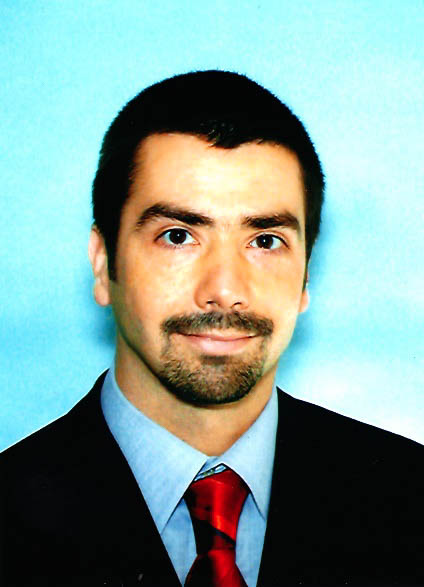
Curriculum Vitae
1977 geboren am 15.04. in München
1987-96 Max Born Gymnasium Germering
1996-97 Zivildienst im Kreiskrankenhaus Fürstenfeldbruck
1997-04 Medizinstudium in München, Alicante und Belfast
2001 Spanisch-Diplom superior, Universität Salamanca
2004 Staatsexamen / Approbation
2004 Junior Research Expert; Ministry of Public Health, Sana’a, Jemen
2004-05 Voluntär, Human Genetics Programme, Welt-Gesundheits-Organisation (WHO), Genf
2005 Promotion, Institut für Molekularbiologie, Universität München
2005-08 Postdoc, Klinischen Kooperationsgruppe Leukämie, Helmholtz Zentrum München
2008-09 Klinisches Jahr in der Medizinischen Klinik 3, Universität München
2009-10 Weiterbildung Humangenetik im Labor für Leukämiediagnostik, Universität München
2010 Projektleiter, Klinische Kooperationsgruppe Leukämie, Helmholtz Zentrum München
Identifizierung rezidivierender tumorspezifischer somatischer Mutationen bei akuter myeloischer Leukämie durch Transkriptom-Sequenzierung.
Greif, P.A.; Eck, S.; Konstandin, N.; Benet-Pages, A.; Dufour, A.; Ksienzyk, B.; LorenzDepiereux, B.; Vetter, A.; Popp, H.; Meitinger, T.; Strom, T.M.; Bohlander, S.K.
Helmholtz Zentrum München, Klinische Kooperationsgruppe ‚Leukämie‘, München, Germany, LMU München, Medizinische Klinik, München, Germany, Helmholtz Zentrum München / Technische Universität München, Institut für Humangenetik, München, Germany
Introduction: Genetic lesions are crucial for cancer initiation. Recently, whole genome sequencing using next generation technology was used as a systematic approach to identify mutations in genomes of various types of tumors including melanoma, lung and breast cancer as well as cytognetically normal acute myeloid leukaemia (CN-AML). Despite its technical feasibility, whole genome sequencing is still time consuming and cost intensive. As an alternative approach, here we identify tumor-specific somatic mutations by sequencing transcriptionally active genes.
Methods: Mutations were detected by comparing the transcriptome sequence of a CN-AML with the corresponding remission sample. In a single Genome Analyzer II run, we generated 2.9 Gb of CN-AML and 1.25 Gb of remission transcriptome sequence from the same patient. 66% of AML reads and 78% of remission reads mapped to exon regions. 10,896 and 6,077 Genes were sequenced with an average coverage of seven or higher for AML and remission sample, respectively. Expression profiles of the AML and remission samples were overall highly correlated (Spearman Rank correlation coefficient=0.86). By comparing the 63,159 Single Nucleotide Variants (SNVs) discovered in the CN-AML sample with the remission sample, we identified 3 non-synonymous mutations specific to the tumor sample. The mutations were confirmed on the genomic level by Sanger sequencing.
Results: We found 3 non-synonymous mutations specific to the CN-AML sample. Among them is a nonsense mutation affecting the RUNX1 gene, which is a frequent mutational target in AML, and a missense mutation in the putative tumor suppressor gene TLE4, which encodes a RUNX1 interacting protein. A second missense mutation was identified in SHKBP1, which acts downstream of FLT3, a receptor tyrosine kinase mutated in about 30% of AML cases. The frequency of mutations in TLE4 and SB1 in a cohort of 95 CN-AML patients was 2%.
Conclusions: Our study demonstrates that whole transcriptome sequencing leads to the rapid detection of recurring point mutations in the coding regions of genes relevant to malignant transformation. Disclosure: No conflict of interest disclosed.